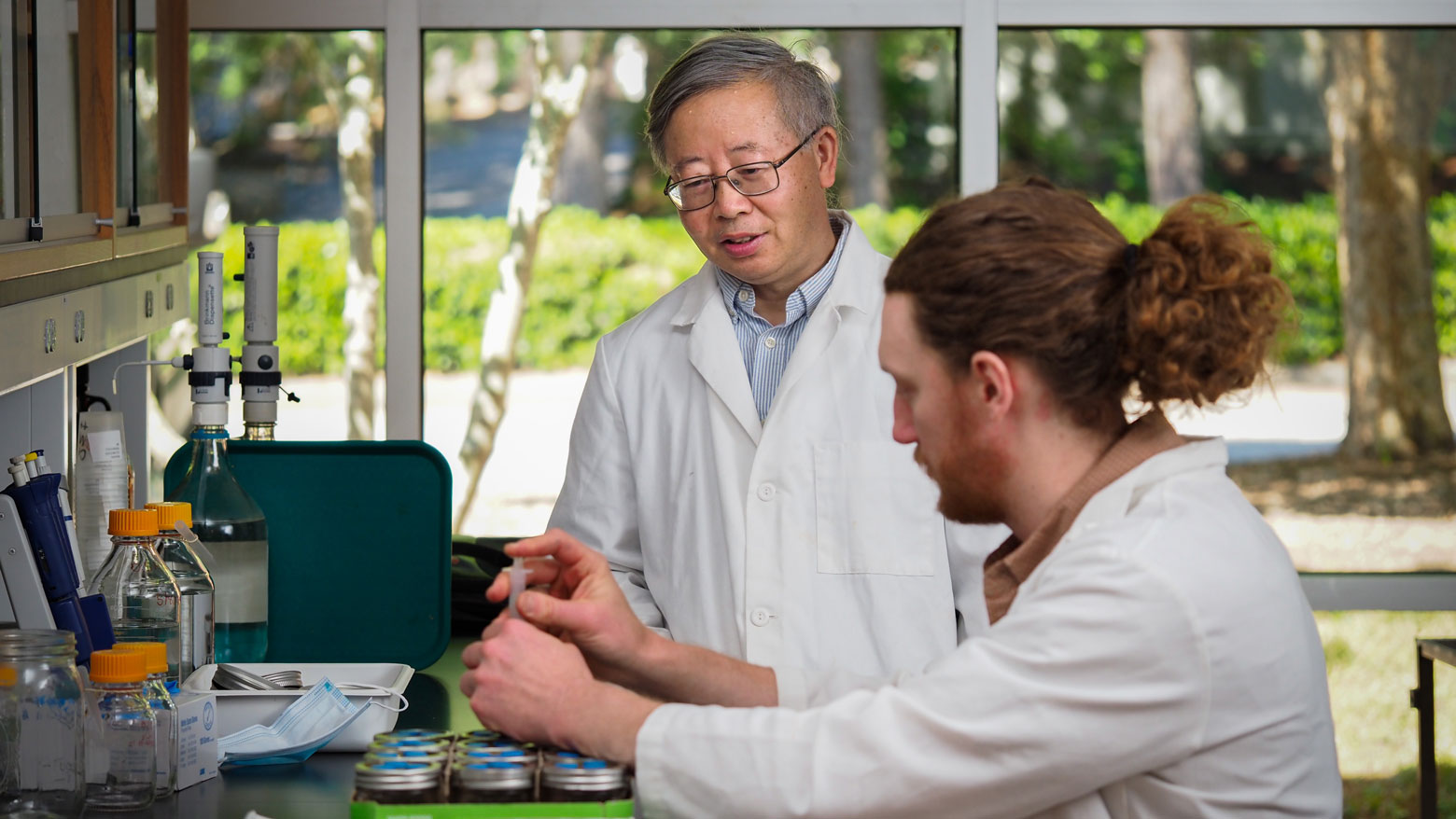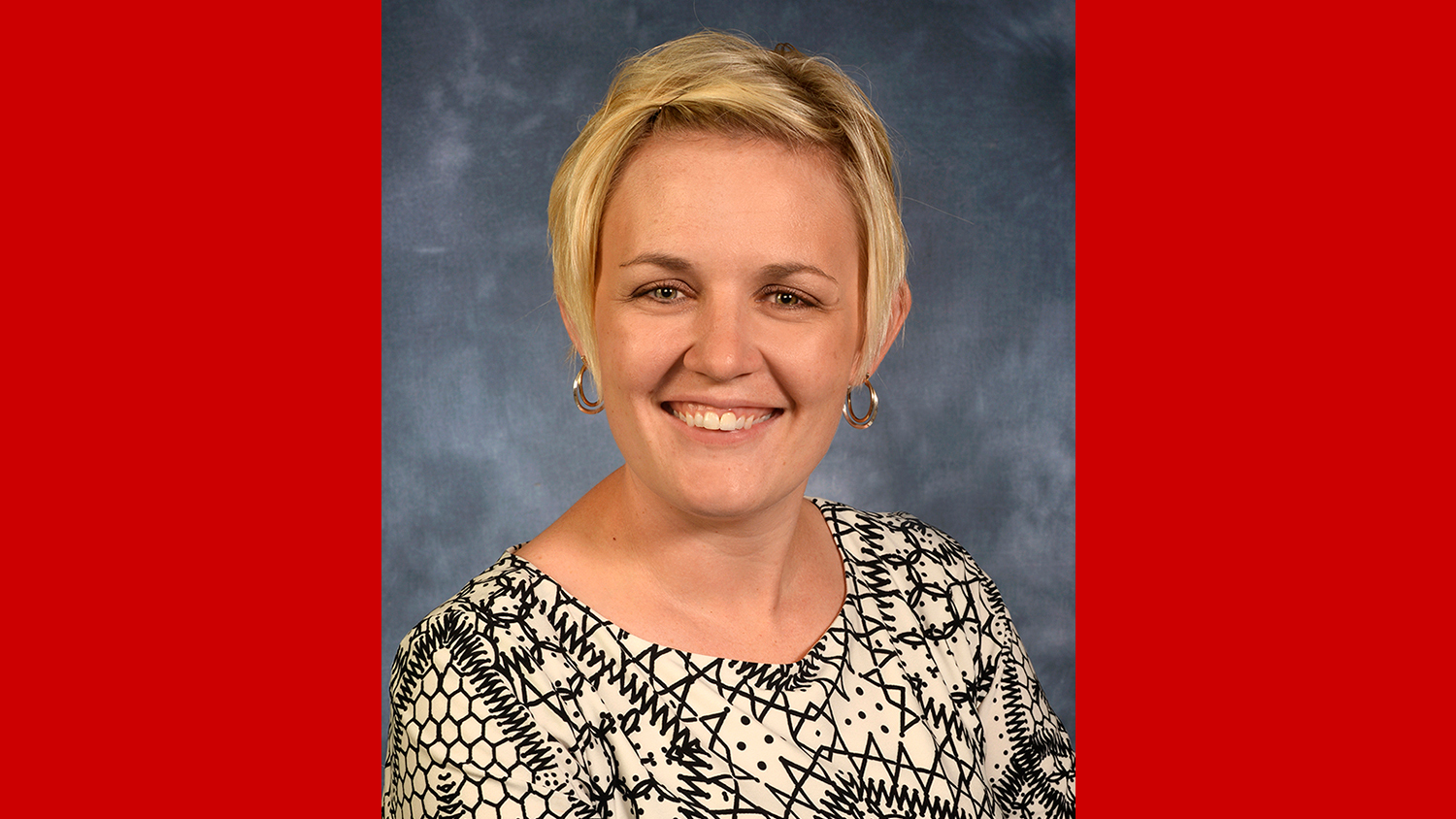Faculty Focus: Shuijin Hu Breaks Ground with Soils and Climate Change Research

Professor Shuijin Hu in the Department of Entomology and Plant Pathology studies climate change from the ground up as a soil ecologist. His recent work focuses on soil microbiology and carbon sequestration in agricultural land.
The Ecological Society of America elected Hu as a 2021 ESA Fellow, citing his “influential research in the fields of plant-microbe interactions, ecosystem ecology and global change ecology.” Hu was also recognized for his dedication to teaching as an NC State faculty member for more than 20 years and former chair of the ESA’s Asian Ecology Section.
Hu’s research has been published in Nature and Science. While many climate change researchers study how forests or grasslands serve as carbon sinks, Hu’s work focuses on agricultural ecosystems. He is part of a team studying microbiological activity and greenhouse gas emissions with the Center for Environmental Farming Systems (CEFS).
Hu was the first to receive the American Phytopathological Society’s Hewitt Award for outstanding and innovative contributions for controlling plant disease.
We asked him about what drives his research and how he approaches collaboration and teaching.
Can you share a basic explanation of soil ecology and what you study?
Ecology’s definition is studying the interactions between organisms and their environment. For soil ecology, we look at the interactions among plants, microbes and animals in the soil environment. The plants are the primary driver because they bring in carbon, which provides energy to drive soil ecosystems.
Soil is tremendously diverse, with millions of bacteria and fungi, as well as many animals and insects inside, including nematodes.
Basically, we look at the organism and environment interactions in soil, and how that affects ecosystem functions, mainly carbon and nitrogen cycling. Related to the carbon cycle and climate change, we study greenhouse gas emissions from soil.
How does your research give us a different perspective in understanding climate change?
Most of our work is in crop fields. Many other climate change research projects across the globe focus on forests and grasslands, but in our case, we’re focused on agricultural ecosystems.
Agricultural ecosystems involve more human disturbance, so they’re more challenging to work with because it’s harder to separate the human-induced effects of management practices and climate change-driven effects.
Our research on climate change started with studying how climate change factors affected soil ecology — organisms and their interactions with the soil itself. We looked at soil microbes and plant root interactions in soil as a first step.
As a second step we looked at how climate change affects the way that soil organisms function. For example, if you have higher temperatures, warming air, how does that affect plants, plant roots and the microorganisms in soil? And then how does that affect carbon dioxide, carbon release from soil? How does it affect levels of nitrous oxide, also a very important greenhouse gas?
For the last several years, we have been looking at greenhouse gas emission from the soil with CEFS, the Center for Environmental Farming Systems. Quite a few people are working together on that research.
What do you enjoy about working at NC State?
I particularly enjoy collaborating with people across multiple departments. Over the last 20 years, I’ve worked with many people. One of the most important collaborations is with the U.S. Department of Agriculture group in Raleigh. Kent Burkey, a plant physiologist with Agricultural Research Service and associate faculty member in Crop and Soil Sciences, is someone I work with on climate change projects.
Another key collaboration is with Chris Reberg-Horton, as a faculty member in Crop and Soil Sciences and at the Center for Environmental Farming Systems (CEFS). He has a new role with the Plant Sciences Initiative. I’ve also been fortunate to work with colleagues who have expertise in experimental design.
At NC State, the fact is, we’re friendly. The atmosphere here is very important.
Equally important for me has been the freedom to work on what I’m interested in, thanks to our department heads over time and the college leadership. Associate Dean for Research Steven Lommel was an advocate when I came here and has been very supportive of my research.
My work in soil ecology, the climate change work, was kind of marginal interest to the plant pathology department 20 years ago. But the senior faculty members and the department head, the college, encouraged me to continue to develop my expertise, seeing that the field had the potential to explode.
Are you looking forward to even more collaboration through the N.C. Plant Sciences Initiative and new Plant Sciences Building?
I think the Plant Sciences Initiative will be very helpful to our research. One aspect that we have been interested in is the mechanisms involved in how plants and microbes interact. We want to work across disciplines to gain a better understanding of plant and microbial responses to climate change.
The Plant Sciences Initiative will attract more people to NC State and bring in more scientists. A new wave of plant people will bring new ideas. I’m looking forward to collaborating with them and to working in the new environmentally controlled facilities.
Tell us about the soil ecology class you co-teach.
Dr. David Orr and I teach the Ecology of Soil Ecosystems graduate class. He’s an entomologist and I’m a microbial person.
We use a different style from regular classes. While there is a lecture portion for about half of the class, for the other half, students present the latest important scientific papers and lead a discussion. There are a lot of topics involved: why the research is important, how the experiments were conducted and how the students feel about it. We discuss whether those kinds of experiments are the best approach to the questions, whether the results actually validate the conclusions and how the students, given a chance, would approach these kinds of questions. It’s very open discussion.
We try to stimulate the students to challenge, to debate. I think they enjoy that approach.


